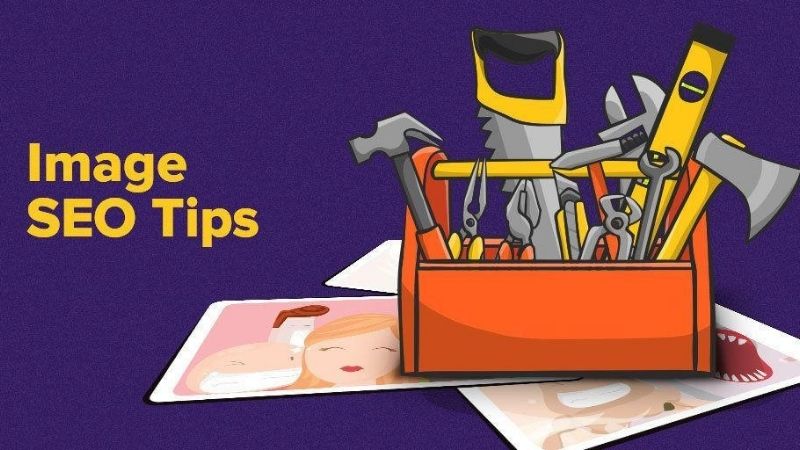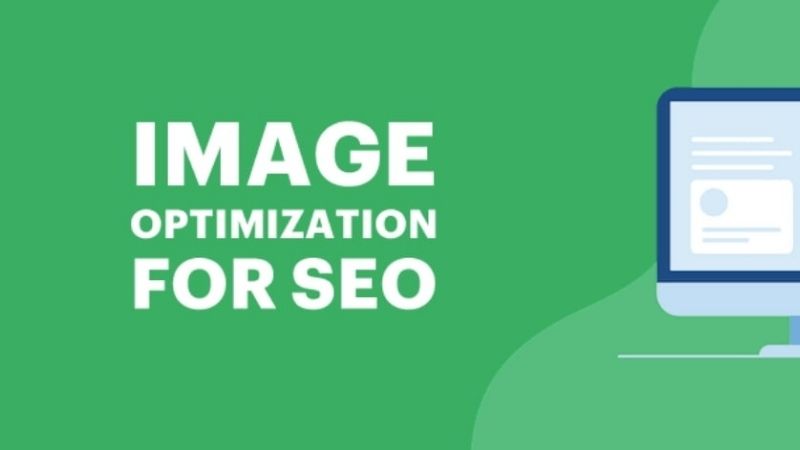How to Optimize Your Images for SEO in 2025?

Hey, everybody! It's getting harder to stand out in digital as we approach 2025, isn't it? Just good content is no longer enough, more is needed for your website to really shine in search engines. It is at this point that one of the secret heroes of SEO, which most people perhaps miss, comes into play: visual optimization! If taken with the right strategies, your beautiful images can almost wing both your SEO performance and the user experience. If you are wondering about the topic "How to Optimize Your Images for SEO in 2025", you are definitely at the right address! In this guide, without too much ado, I will explain with Decal information how to optimize your images in a way that search engines will love and visitors will admire. If you're ready, buckle up and let's see how we can make a difference in the digital arena by unleashing the visual power of your site! Remember, a well-optimized image can mean thousands of potential customers.
The Cornerstones of Visual Optimization: File Names, Subtexts and Headings

When starting visual SEO, one of the first and most important steps is to give meaningful file names to your images. "IMG_1234. Instead of meaningless names such as "jpg", use names that describe the content of the image and contain keywords. For example, for a photo of Ankara Castle, a name like "jpg" sends a clear signal to Google about what the image is about. This helps search engines to classify your image decently. Remember, to be short and concise, it is best to use hyphens (-) between words as Decals. This small detail can make a big difference.
The second critical element is the alt text. Alt text is descriptive text that replaces an image when it cannot be displayed and is vital for accessibility. Screen readers for visually impaired users will voice this text. In terms of SEO, alt Decals are the primary way to tell search engines the content of the image. Google can't "see" the images, but it "reads" the alt text. A good alt text should describe the image accurately and concisely, include the keyword naturally if possible, but you should never stack keywords. For example, a subtext such as "The appearance of the historical walls of Ankara Castle in the evening light" for the Ankara Castle picture is both descriptive and effective. Many sites are missing an important SEO opportunity by skipping this simple step. Don't be one of them.
Finally, there are image titles (title attribute). Although it doesn't have as much direct weight in SEO as alt text, it can offer a small contribution to the user experience. When the mouse cursor hovers over the image, it appears as a small information box and can provide extra contextual information. For example, you can add the model number or a short introduction to the title of a product image. Your priority should always be clear and clear subtexts, but if you have time, it may be useful to fill in the headings as well. By using these three basic stones – file name, alt text and title – correctly, you significantly increase the discovery potential of your images.
The Effect of Choosing the Right Image Format and Sizing on SEO

When choosing and preparing images for your website, choosing the right image format and sizing the images appropriately deeply affect your page loading speed and, therefore, SEO performance. There are many formats on the market, but knowing the most common and modern alternatives makes your job easier. But today, modern formats such as WebP stand out by offering much better compression and quality compared to both JPEG and PNG. Google also likes and encourages these formats because smaller file sizes mean faster loading pages!
If you want a quick guide on which format is more suitable and when:
- JPEG (.jpg): Usually, photos are ideal for visuals with complex color transitions. It offers good compression.
- PNG (.png): Logos, icons, graphics with text and transparent background are preferred for situations where required. It is lossless, but the file size may be large compared to JPEG.
- WebP: is a modern format that supports both lossy and lossless compression and offers higher quality in a smaller file size compared to JPEG and PNG. Try to use it if possible!
- SVG (.svg): Perfect for scalable vector graphics such as logos and icons. It looks clear in all sizes without loss of quality.
Remember, the beginning of the job is finding the right format, so you start reducing the file size without compromising the quality much. Well, then there are a lot of nice tools like TinyPNG or Squoosh, you can compress pictures with them like this. What is the purpose? Make the file as small as possible, but keep the image quality the same as possible, that's the thing.
Sizing, on the other hand, is not only related to the file size, but also to the pixel dimensions of the image. Loading an image that will be used on a 600-pixel-wide area on your site with a width of 3000 pixels unnecessarily increases page load. The ideal thing is to prepare and upload the image in the largest size that you will use. Even better is to present different images to different screen sizes using the `srcset` feature for responsive images (responsive images). Also, specifying the width and height values in the `' tags helps the browser to allocate space for the image while the page is loading, thereby preventing annoying shifts called CLS (Cumulative Layout Shift). This is a user experience metric that Google cares about for Core Web Vitals.
Speed is Everything: Image Upload Times and User Experience

Internet users don't have much patience; if a page loads slowly, most people leave without waiting. This situation leads to high bounce rates and therefore Decadence in the eyes of search engines. Google considers page load speed to be an important ranking factor, and images are often the heaviest components of a page. Unoptimized, oversized images will slow down your site, undermine the user experience, and harm your SEO efforts. Therefore, ensuring that your images load quickly is of critical importance in order to stand out from the competition in 2025. Remember, a fast site not only makes users happy but also sends positive signals to Google.
One of the most effective ways to increase page speed and improve the user experience is the lazy loading technique. Lazy loading allows all the images on a page to be loaded not as soon as the page opens, but only when the user scrolls down the screen and approaches the section where the image is located. This seriously improves the initial page load time, especially on long pages with a lot of images or blog posts. Most modern browsers now support this feature natively by adding the `loading="lazy"` attribute to the `' tag, which allows you to easily implement it without the need for JavaScript. This reduces server load and allows users to interact with your page faster; everyone wins!
Another great method to further increase the speed of visual uploading is to use the Content Delivery Network (CDN), that is, the Content Delivery Network. A CDN copies static files of your website (such as images) on many different servers around the world. When a user visits your site, the content is transmitted from the server that is geographically closest to them. This significantly reduces load times, especially if you are addressing an international audience or if your users are away from your server. Popular CDN providers such as Cloudflare or Amazon CloudFront can help you with this. CDNs also relieve server load with caching mechanisms and improve the overall performance of your site. Fast-loading images mean better user interaction and better SEO.
Advanced Techniques: Structured Data, Sitemaps and Future Trends
After making basic optimizations, you can apply some advanced strategies to take the SEO of your images even further. One of them is to use image sitemaps. Like regular sitemaps, visual sitemaps help Google find all the images on your site, especially those that are uploaded with JavaScript or can't be easily discovered. You can provide more context to Google by adding additional information, such as title, description, as well as the URL of your images to these maps. Oct. This is a very valuable step, especially for visually weighted sites.
Another effective method is to use structured data, i.e., Schema Markup. By using the `ImageObject' schema type, you can add detailed information such as author, copyright, and description to your images. This allows Google to better understand your image and increases your chances of being displayed in Google Image Search with rich snippets or special badges (for example, the "Product" badge for products). Such rich results mean higher click-through rates. Although it may seem a little technical, WordPress plugins or Google's tools can make this process easier. Remember, the more and clearer information you give to Google, the better it will understand and reward you.
That's it! That's it! How to Optimize Your Images for SEO in 2025: These are the basic and advanced tactics you need to know. Remember, visual optimization is not a one-time job, but a process that requires constant attention and effort. But when done decently, it is a powerful tool that will make your website liked by both users and search engines. Follow these tips, watch the results and keep shining in the digital world!